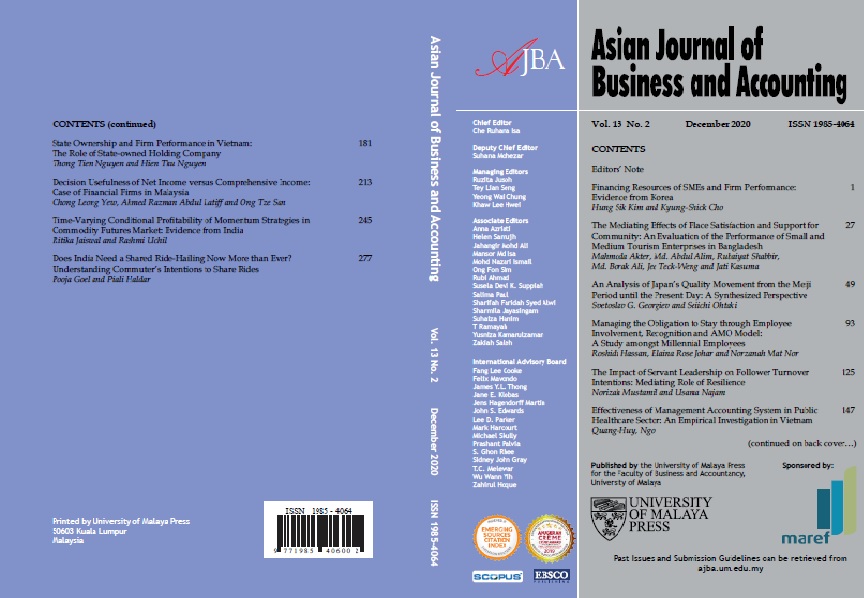Managing the Obligation to Stay through Employee Involvement, Recognition and AMO Model: A Study Among Millennial Employees
Main Article Content
Abstract
Manuscript type: Research paper
Research aims: The aim of this paper is to investigate the impact of human resource practices, namely employee involvement and employee recognition, on normative commitments. It also attempts to determine the role of the ability, motivation and opportunity (AMO) model as a mediator in the relationship associated with human resource practices, and normative commitments.
Design/Methodology/Approach: Data were collected across 168 employees, working in small and medium enterprises (SMEs) in Selangor, Malaysia. Structural equation modelling with bootstrapping estimation was used to predict and estimate the relationships.
Research findings: The results indicate that both employee involvement and employee recognition have a significant impact on the normative commitment. This study however, indicates no mediation effect on both of these relationships.
Theoretical contribution/Originality: This study seeks to compliment and extend the human resource (HR) practice and organisational commitment literature base by incorporating the AMO model as a mediation variable.
Practitioner/Policy implication: The underlying messages to HR practitioners and also SMEs owners are that employee involvement and employee recognition are amongst the most important HR practices to be employed in the current working environment, which will soon be dominated by the millennials. Organisations should focus on exhibiting a great working environment that involves employees in daily work activities, and promotes recognition programmes that motivates employees’ retention rates.
Research limitation: Data were collected through the use of a questionnaire in a designated period of time, and did not permit causal inferences. Moreover, it only focusses on service sectors of SMEs, and therefore the results may not be as generalised as one sought it to be.
